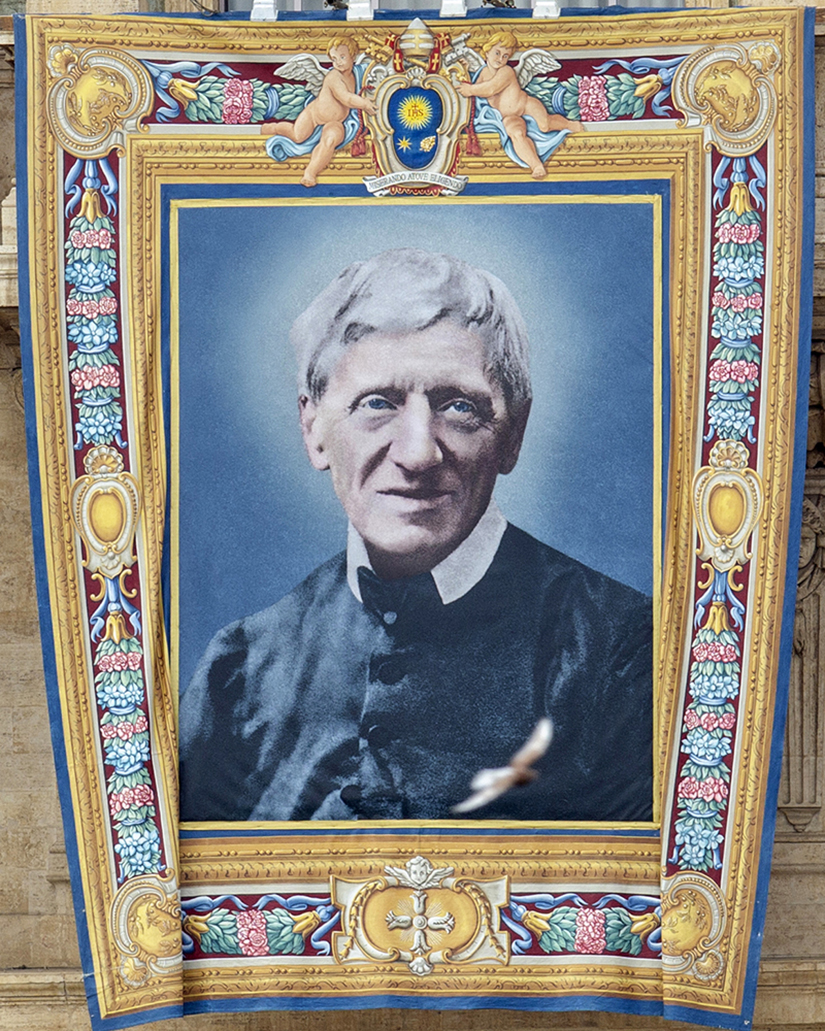 St. John Henry Newman
St. John Henry NewmanVATICAN CITY — Saints recognized their need for God’s help, took risks to discover God’s will and to help others, and nurtured a habit of thanksgiving, Pope Francis said.
“The culmination of the journey of faith is to live a life of continual thanksgiving. Let us ask ourselves: Do we, as people of faith, live each day as a burden, or as an act of praise?” the pope said in his homily Oct. 13 after formally declaring five new saints for the Catholic Church.
Those canonized at the Mass were: St. John Henry Newman, the British theologian, poet and cardinal who died in 1890; Brazilian St. Maria Rita Lopes Pontes, popularly known as Sister Dulce, who died in 1992; Indian St. Mariam Thresia Chiramel Mankidiyan, founder of the Congregation of the Holy Family, who died in 1926; St. Marguerite Bays, a Swiss laywoman and mystic, who died in 1879; and St. Josephine Vannini, the Italian co-founder of the Daughters of St. Camillus, who died in 1911.
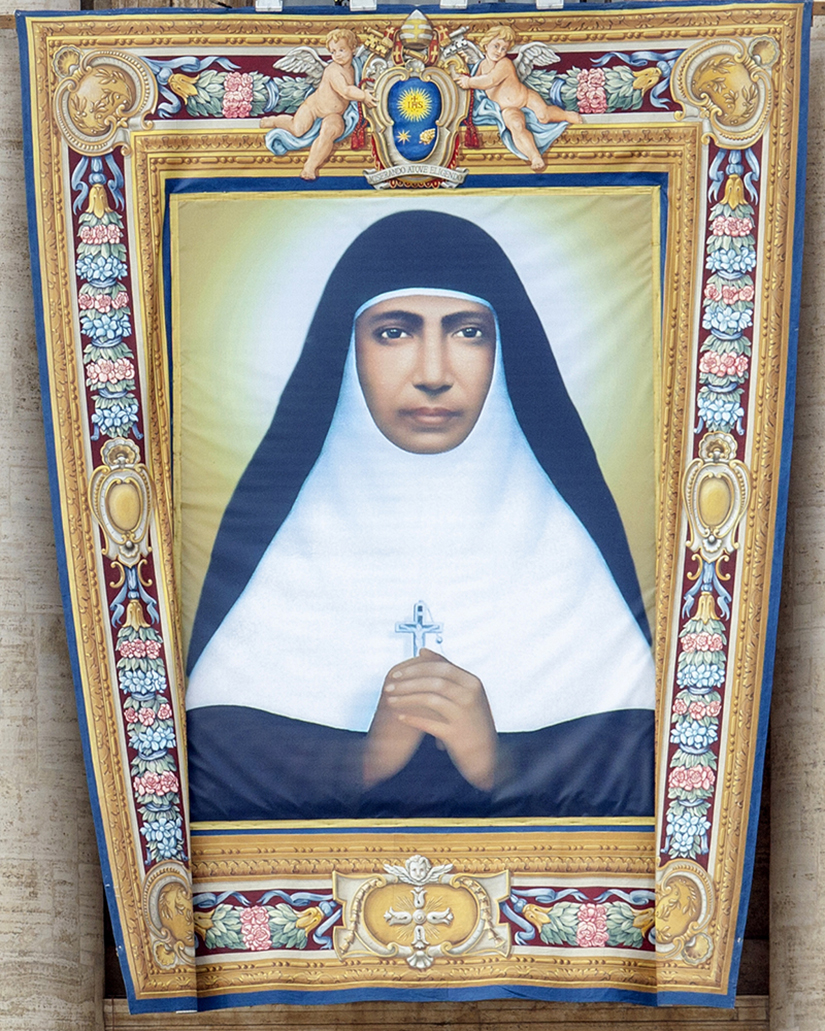 St. Mariam Thresia Chiramel Mankidiyan
St. Mariam Thresia Chiramel Mankidiyan“Three of them were religious women,” the pope noted in his homily. “They show us that the consecrated life is a journey of love at the existential peripheries of the world.”
“St. Marguerite Bays, on the other hand, was a seamstress; she speaks to us of the power of simple prayer, enduring patience and silent self-giving,” he said.
Rather than describing St. Newman, Pope Francis quoted from him to illustrate the meaning of “the holiness of daily life”: “The Christian has a deep, silent, hidden peace, which the world sees not …. The Christian is cheerful, easy, kind, gentle, courteous, candid, unassuming; has no pretense … with so little that is unusual or striking in his bearing that he may easily be taken at first sight for an ordinary man.”
And, referencing St. Newman’s famous hymn, “Lead, Kindly Light,” the pope prayed that all Christians would be “‘kindly lights’ amid the encircling gloom.”
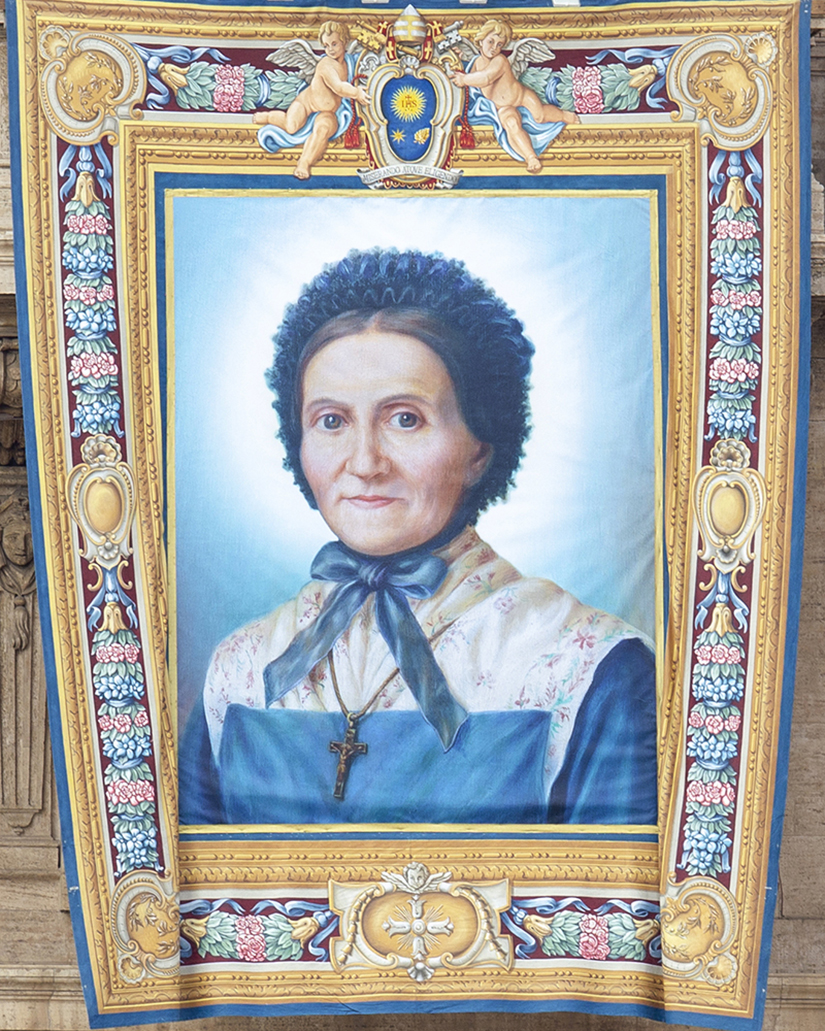 St. Marguerite Bays
St. Marguerite BaysTens of thousands of people filled a sunny St. Peter’s Square for the canonization ceremony and Mass. Among them were Britain’s Prince Charles, Italian President Sergio Mattarella, Brazilian Vice President Hamilton Martins Mourao, a member of Switzerland’s federal council and the deputy foreign minister of India.
Melissa Villalobos from Chicago also was there with her husband and children, and they brought up the offertory gifts at the
Mass. Villalobos’ healing, which saved her life and the life of her unborn child, was accepted as the miracle needed for St. Newman’s canonization.
Hours before the Mass began, Holy Family Sisters Manjula and Aruna stood just outside the security checkpoint, handing out Indian flags, rosaries and prayer cards, caps and scarves with the image of their order’s founder, St. Thresia.
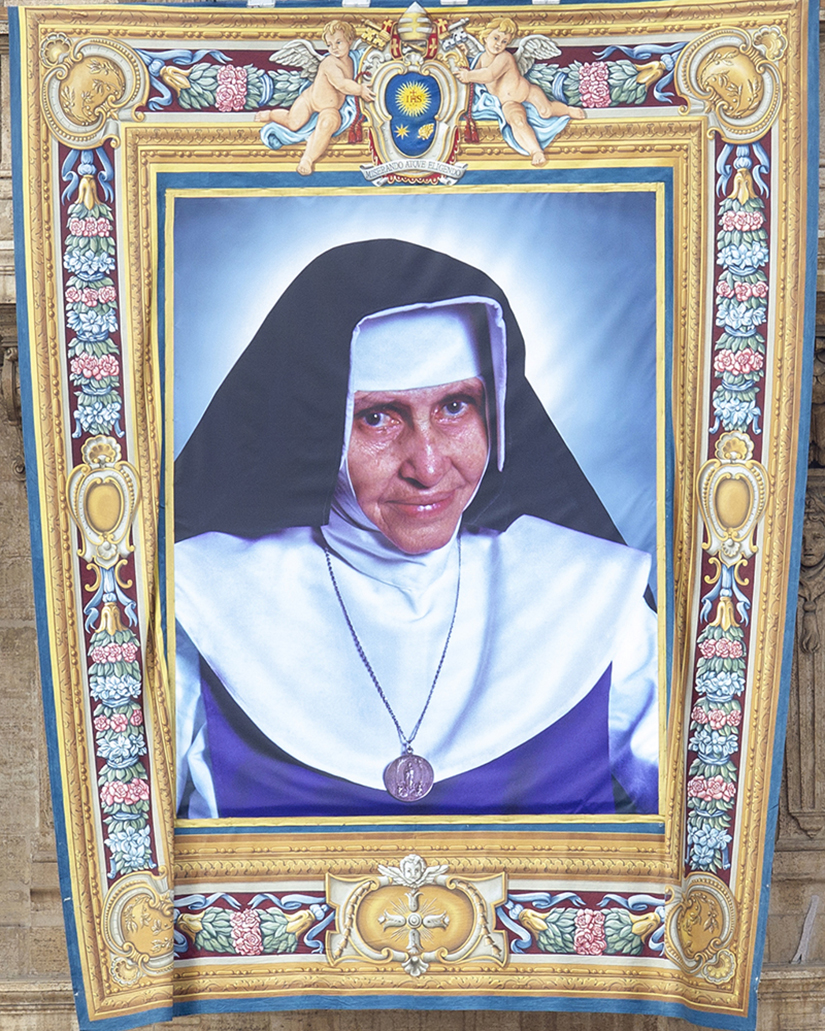 St. Maria Rita Lopes Pontes
St. Maria Rita Lopes PontesThe new saint’s focus, and that of her order today, is assisting families, said Sister Manjula, whose ministry is “counseling and visiting houses and helping solve problems. We help all families — non-Christian, non-Catholic, anyone.”
Gregory K. Hillis, a professor of theology at Bellarmine University in Louisville, Kentucky, was representing his university at the Mass, but his presence was very personal, too.
“Newman is important to me theologically and for my spirituality,” he said. “And I
like his conversion story” of how, as an Anglican priest, he became a Catholic at the age of 44. “I became a Catholic 13 years ago, and Newman was an important guide. He converted, but maintained his friendships, his respect and love for the tradition that he left.”
An official delegation of Anglican bishops and priests also attended the Mass, and
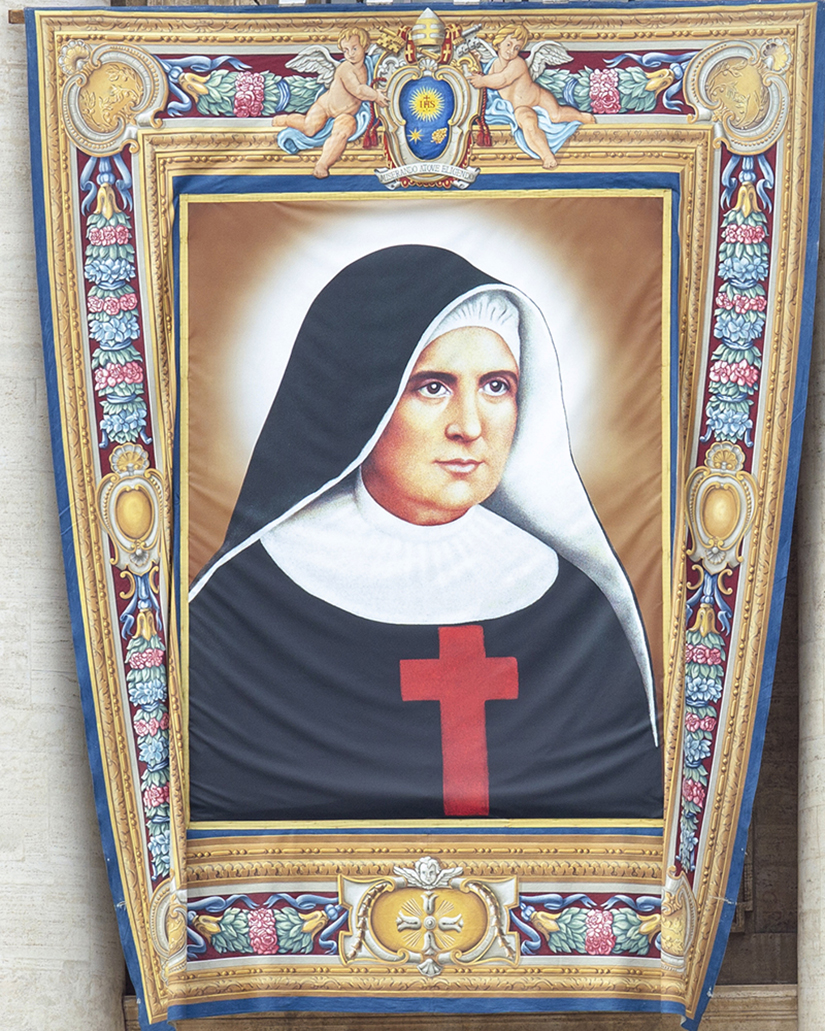 St. Josephine Vannini
St. Josephine VanniniArchbishop Justin Welby of Canterbury, leader of the Church of England, recorded a message for the occasion.
“His legacy is far broader than one church or two churches,” the archbishop said. “It is a global legacy, a legacy of hope and truth, of the search for God, of devotion to being part of the people of God.”
St. Newman’s role in founding the Oxford Movement in the Church of England, a push to rediscover the early Christian writers and to recover the Catholic roots of Anglicanism, “had a fundamental, lasting, beneficial and important influence on Anglicanism,” Archbishop Welby said.
As is his custom at Mass, including at canonizations, Pope Francis used his homily to reflect on the day’s Scripture readings and only made passing reference to the people being declared saints.
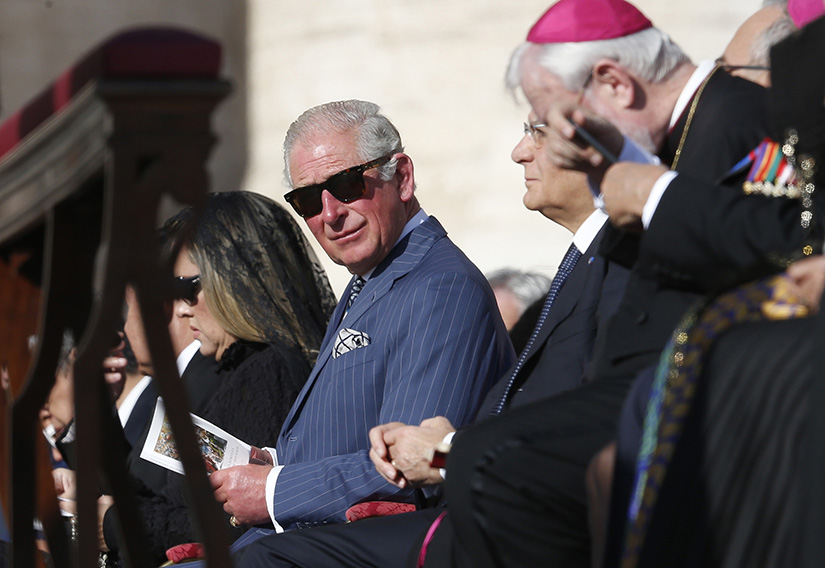 Britain’s Prince Charles attended the canonization Mass. Among those canonized was John Henry Newman, a convert from Anglicanism. Newman, Prince Charles wrote, “is needed more than ever for the manner in which, at his best, he could advocate without accusation, could disagree without disrespect and, perhaps most of all, could see differences as places of encounter rather than exclusion.”Photo Credits: Paul Haring | Catholic News Service
Britain’s Prince Charles attended the canonization Mass. Among those canonized was John Henry Newman, a convert from Anglicanism. Newman, Prince Charles wrote, “is needed more than ever for the manner in which, at his best, he could advocate without accusation, could disagree without disrespect and, perhaps most of all, could see differences as places of encounter rather than exclusion.”Photo Credits: Paul Haring | Catholic News ServiceThe day’s short Gospel reading from Luke recounted the story of 10 lepers who, seeing Jesus approach, cry out to Him for healing. He tells them to go show themselves to the priests and, as they go, they are healed. But only one returns to thank Jesus.
“Like those lepers,” Pope Francis said, “we, too, need healing, each one of us. We need to be healed of our lack of confidence in ourselves, in life, in the future; we need to be healed of our fears and the vices that enslave us, of our introversion, our addictions and our attachment to games, money, television, mobile phones, to what other people think.”
The story also illustrates how, “on the journey of life, purification takes place along the way, a way that is often uphill since it leads to the heights,” he said. “Faith calls for a journey, a ‘going out’ from ourselves, and it can work wonders if we abandon our comforting certainties, if we leave our safe harbors and our cozy nests.”
And, finally, he said, the story teaches that returning to Jesus with a heart full of gratitude is the culmination of the journey of faith.
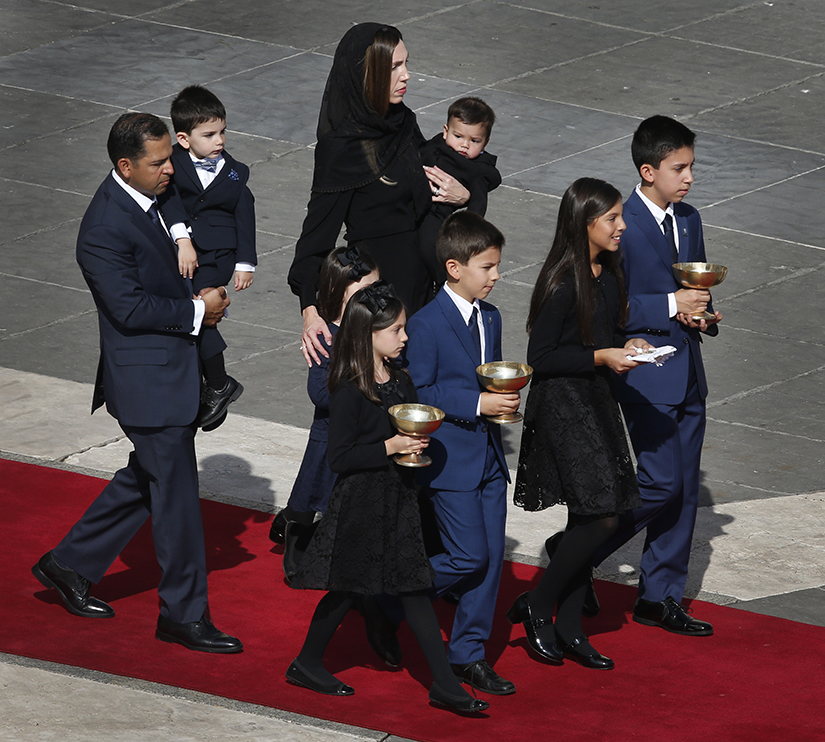 Melissa Villalobos of Chicago and her family carried the offertory gifts at the canonization Mass for five new saints. Villalobos’ healing through the intercession of St. John Henry Newman was accepted as the miracle needed for the British cardinal’s canonization.Photo Credits: Paul Haring | Catholic News Service
Melissa Villalobos of Chicago and her family carried the offertory gifts at the canonization Mass for five new saints. Villalobos’ healing through the intercession of St. John Henry Newman was accepted as the miracle needed for the British cardinal’s canonization.Photo Credits: Paul Haring | Catholic News Service
St. John Henry Newman’s conscience insights remain timely today
Sydney archbishop, others say Newman is ‘worthy of doctor of the Church’
By Simon Caldwell | Catholic News Service
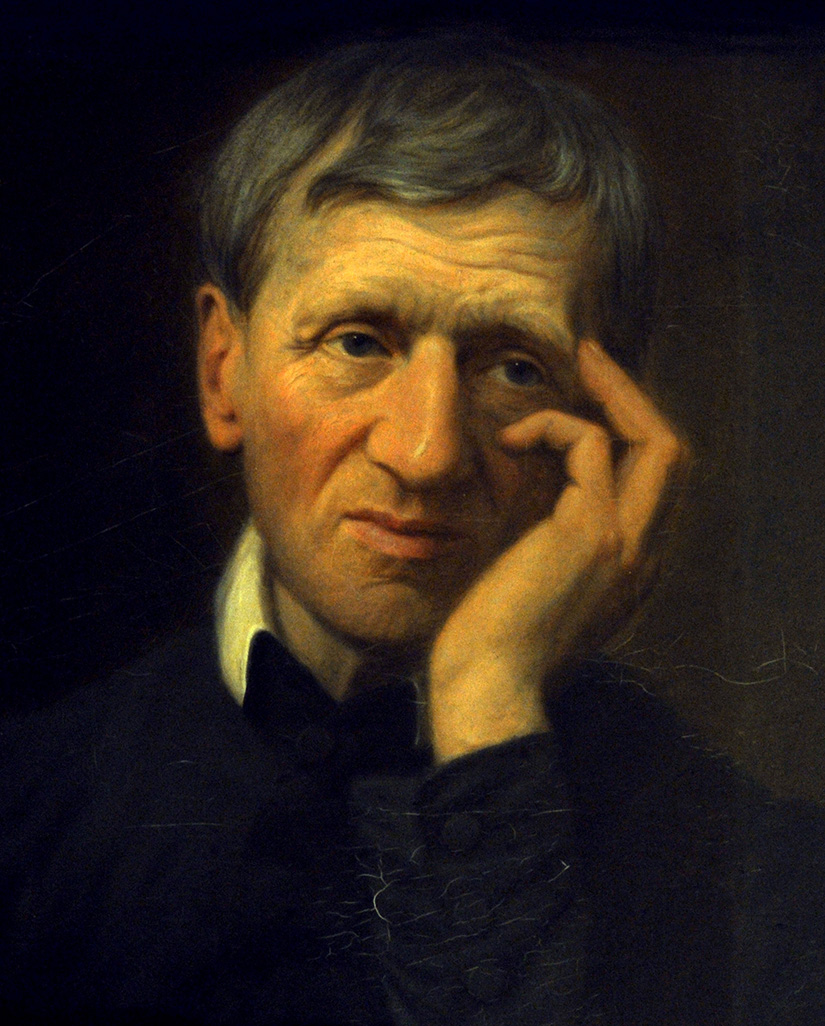 St. John Henry NewmanROME — St. John Henry Newman’s insights into the function and
meaning of conscience “could not be more timely” given widespread moral
confusion in the Western world, said Sydney Archbishop Anthony Fisher.
St. John Henry NewmanROME — St. John Henry Newman’s insights into the function and
meaning of conscience “could not be more timely” given widespread moral
confusion in the Western world, said Sydney Archbishop Anthony Fisher.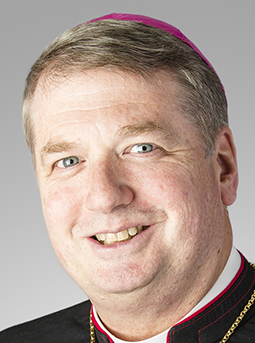 Abp. Fisher
Abp. Fisher
Speaking
at an Oct. 12 symposium at the Dominican-run Pontifical University of
St. Thomas Aquinas, commonly called the Angelicum, Archbishop Fisher
said Cardinal Newman’s theology of conscience offered an antidote to the
moral relativism that was convulsing many societies.
The power of
Cardinal Newman’s teachings, he said, could be seen in the witness of
the White Rose, an anti-Nazi movement in wartime Germany, which found
the courage to defy Adolf Hitler partly after studying the new saint’s
writings on conscience.
Sophie Scholl, the most famous member of
the White Rose, was just 21 years old when she was beheaded in
Stadelheim Prison, Munich, in February 1943 after she and her brother,
Hans, flooded the famous Lichthof (atrium) of Munich University with
leaflets inciting students to oppose Nazism.
He cited scholarly research to emphasize how Cardinal Newman’s works influenced Sophie Scholl in particular.
“In
1942, she gave a volume of Newman’s sermons as a parting gift to her
boyfriend, Fritz Hartnagel, when he was sent to the Eastern Front,”
Archbishop Fisher said.
“Fritz wrote to Sophie from the horrors of
the battlefield that Newman’s writings were ‘like drops of precious
wine,’” words scholars identified as coming verbatim from a sermon given
by Newman called “The Testimony of Conscience.”
Archbishop Fisher
said that on the strength of such teachings, Cardinal Newman, who was
canonized Oct. 13, was already “celebrated by many people as worthy of
doctor of the Church and specifically doctor of conscience.”
He
said that, to Cardinal Newman, conscience was not an “inbuilt sat-nav”
or like the good angel who stood on the shoulder of Fred Flintstone and
whispered advice into his ear.
“In our day, when an intellectual
and moral relativism threatens to sap the very foundations of our
society, Newman reminds us that, as men and women made in the image and
likeness of God, we were created to know the truth and find in that
truth the ultimate freedom and deepest fulfillment,” said Archbishop
Fisher.
His talk was the second time the symposium reflected on the White Rose.
Earlier,
George Weigel of the Ethics and Public Policy Center in Washington,
D.C., told how the nonviolence and Christian resistance of the movement
“was formed in part by a serious spiritual and intellectual encounter”
with Newman.
“There is a lot of talk in the 21st century Church
about conscience, and Newman is invoked by many prominent personalities
in those debates,” Weigel said.
“So it might be useful for all
concerned to ponder on Newman’s influence on these contemporary martyrs.
What did the members of the White Rose learn from Newman about
conscience?” he asked.
The evening of Oct. 12, thousands gathered in the Basilica of St. Mary Major for a vigil of prayer ahead of the canonization.
Among
the guests was Melissa Villalobos, a Chicago mother of seven who was
inexplicably healed from a potentially fatal hemorrhage that also
threatened to take the life of her unborn child.
The bleeding
stopped when she prayed urgently to Cardinal Newman, and the healing was
recognized as the miracle needed to canonize the saint.
Villalobos
read one of the bidding prayers while 5-year-old Gemma, the daughter
who was saved by the healing, watched with her brothers and sisters and
David, her father.